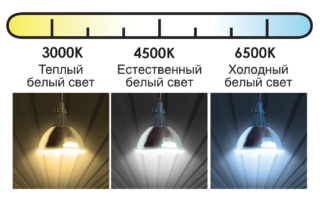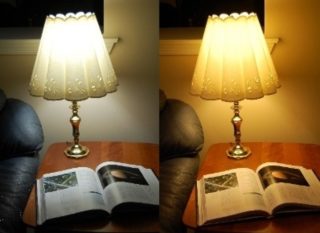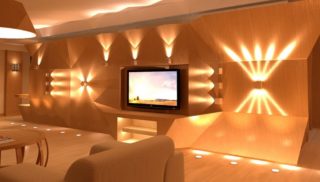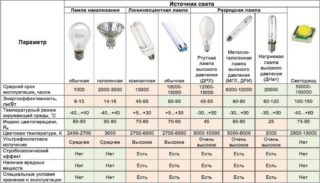When arranging lighting in an apartment, house, office, it is important to choose the right lamp light. Often cold and warm light, the difference of which is obvious, seriously compete with each other. This is due to the fact that the shades of lighting affect vision, mood in different ways, and also change the visual perception of interior items, the color scheme in it.
How lighting affects vision and mood
As for the impact on the central nervous system of a person, different shades of lamps (cold, neutral, warm) work like this:
- Cold - invigorates, tones, increases concentration.
- Neutral - almost equal to daylight, therefore, does not significantly affect the central nervous system.
- Warm - relaxes, creates a feeling of peace, comfort, softness.
Not a single shade of the lamp has a negative effect on the eyes. The exception is flickering light. It provokes an increased tension of the organs of vision at rest and when performing work requiring increased concentration: reading, watching TV, manicure, sewing, etc.
Additionally, shades of light are able to change the colors of surrounding objects - to make them more muted or vice versa bright. The light of an incandescent lamp is able to enhance all the colors of a warm gamut. Cold lighting also works in relation to related shades. Therefore, it is advisable to choose home furnishings and furniture in the house with the level of lighting that prevails in the desired room. Otherwise, unpleasant surprises are possible when arranging the purchased.
With age, the lens of the person’s eyes turns slightly yellow. Therefore, all tones, lighting are seen in warmer variations. To correct this perception, you can add a cold lamp to the room.
What is color temperature?
 Any shade of light has its own color temperature. Measure it in kelvins (K). The scale from left to right starts at 800 K and ends at 20,000 K. The higher the Kelvin level, the colder the lighting level. The value of 800 K corresponds to the dim glow of a red-hot body. The maximum parameter of 20,000 K is equal to the color of the sky in polar latitude.
Any shade of light has its own color temperature. Measure it in kelvins (K). The scale from left to right starts at 800 K and ends at 20,000 K. The higher the Kelvin level, the colder the lighting level. The value of 800 K corresponds to the dim glow of a red-hot body. The maximum parameter of 20,000 K is equal to the color of the sky in polar latitude.
To create artificial lighting, the consumer is mainly offered lamps with the following color temperature:
- 2700-3000 K. This is a standard incandescent lamp with a tungsten filament, which provides warm light in the room.
- 4000-4100. This is a neutral light, almost completely repeating daylight.
- 5000-6500 K. Cold with an admixture of blue shades of the lamp.
As a rule, on boxes with energy-saving light bulbs, this parameter is affixed by the manufacturer in a conspicuous place.
What is better for a person: warm or cold light
 The best option is a combination of all types of lighting in the room, which can be controlled as needed. For work that requires concentration, to make a cold light bulb more intense, for relaxation in the evening - focus on warm shades of lighting.
The best option is a combination of all types of lighting in the room, which can be controlled as needed. For work that requires concentration, to make a cold light bulb more intense, for relaxation in the evening - focus on warm shades of lighting.
Natural white light (neutral)
The best option for lighting work and residential premises. Such bulbs do not distort the perception of interior items, do not change the color scheme and do not significantly affect the mood of a person. It is better to place such points of artificial light in the living room, nursery, hallway, bathroom, kitchen.
Neutral lighting around a women's dressing table is especially relevant.
Warm light
This type of lighting is most often used in residential premises. In accordance with the original shade of the interior item under warm lamps, this change occurs:
- Blue - loses intensity, becomes inexpressive, faded.
- Blue - forms greenish shades.
- Violet - Converts to deep shades of red.
- Dark blue (indigo) - changes to black.
In warm lighting, red, orange, brown, yellow, cream colors and other shades from this gamut look bright and catchy.
Since a spacious room visually loses its area under the light of a warm lamp, it is better to use such lighting only as local. Or place several spotlights under the ceiling around the entire perimeter of the room.
Lamps with a temperature level of 2700-3000 K are ideally combined with all natural materials - wood, cotton, linen, brick, straw, vintage metal. It is good to combine such a light with the interior styles of Art Nouveau, Provence, retro, eco, classic, ethnic style. You can connect it to the vintage.
At home, it is good to use warm light bulbs in the nursery, fireplace room, living room, hallway, in the bedroom in the form of lamps by the bed.
For public places, lighting in warm colors is good to use in the halls of thematic bars, cafes, restaurants. In boutiques, shops with jewelry.
Street lighting with a warm lamp looks good on boulevards, in parks, squares with long alleys.
Cold light
This color temperature is recommended for use in office rooms, medical facilities, laboratories.
Cold lighting visually enhances the blue-blue shades, gray, white, steel colors. Warm tones when using such lamps, on the contrary, become muffled, distorted, dim.
Lamps with a cold temperature ideally fit into the interior of the premises with a predominance of geometric shapes, chrome or steel elements in them. The perfect combination of such lighting is noted with the interiors of hi-tech, modern, minimalism, futurism, Scandinavian and classical styles.
At home, cold light is best used as local or only in the bathroom, in the area of the working surface of the kitchen.
For public places, energy-saving lamps with this color temperature are applicable in classrooms, offices, warehouses. For street lighting, cold light lamps are mounted on autobahns, stadiums, in hangars, on production sites.
How to choose a lamp for the home
To choose a light bulb for use in one of the rooms, you need to be guided by such criteria in addition to color temperature:
- Principle of operation. It distinguishes standard incandescent lamps, LED, halogen, fluorescent. The latter are less suitable for use at home, because they flicker strongly and have a very high color temperature. LED elements do not have a significant effect on the eyes or interior items, as they are local (point) elements of illumination.
- Efficiency. Here, LEDs come first. On the last - incandescent lamps.
- Color rendering index. Marked as Ra. An indicator is considered optimal from 83 to 100. The higher it is, the less colors will be distorted when illuminated by such a lamp.
- Type of flask. It can take the form of a spiral, pear, candle, tube, ball, etc. You can determine the required shape by the type of floor lamp / lampshade (open, closed).
- Cost. The cheapest are incandescent lamps. The most expensive ones are energy-saving. But the price of such elements is fully paid off by low power consumption.
How much to spend on an element, each master determines for himself.
Lamps with different color temperatures in one room
The main ban on the use of cold and warm lamps is their screwing into one chandelier. Otherwise, you can combine different color temperatures, but adhering to these recommendations:
- In living rooms, the top (main) type should always be warm or neutral white light.
- If you want to combine different levels of lighting, warmer sources are made below the ceiling in the form of spotlights, sconces, floor lamps. They can be turned on in the evening during family vacations and dimmed other levels of lighting.
- It is allowed to mount various lamps in one room, if the first work as the main source of light, and the second - accent. An example is local spotlights above paintings, panels, statuettes.
- Different color temperatures are connected so that the rays of the lamps used never intersect.
- The combination of cold and neutral white light looks good.
It is undesirable to simultaneously include both types of different lighting, which can be very different from each other.
What kind of light is needed for reading
For a long reading, doctors recommend combining the main and local type of lighting in the room. At the same time, their color temperatures should not have sharp changes. This has a beneficial effect on the eyes. If you use only local light (a table lamp), it is difficult to achieve the required level of uniformity of illumination of the book. The organs of vision suffer from this.
The lamp should be placed above the book so that it does not give glare, shadows. The level of light intensity should be average. Very bright or weak strain your eyes.
It doesn’t matter if the light is warm or cold. The main thing is that both sources (main and local) should not have differences (be either cold or warm).
Color Rendering Index (CRI or Ra)
 The color rendering index means the quantitative ability of the lamp to correctly display colors in the interior. In English it sounds like “color rendering index” or just “CRI” (Ra). The latter type of labeling is often affixed to a box of goods.
The color rendering index means the quantitative ability of the lamp to correctly display colors in the interior. In English it sounds like “color rendering index” or just “CRI” (Ra). The latter type of labeling is often affixed to a box of goods.
The Ra value is considered on a scale from 1 to 100, where 1 is the worst color rendering with distortion, and 100 is the most accurate. Comfortable for the human eye is a value from 80 to 100.
For different types of lamps, the following Ra indicators are characteristic:
- incandescent - 80;
- cheap luminescent - 60-70 Ra;
- models of famous manufacturers - 70-90;
- LED sources - from 80 and more;
- halogen - close to 100 Ra.
When choosing a light bulb for your home, always pay attention to the Ra level. The cardinal differences of this indicator in two neighboring elements lead to the predominance of the worst of them.






